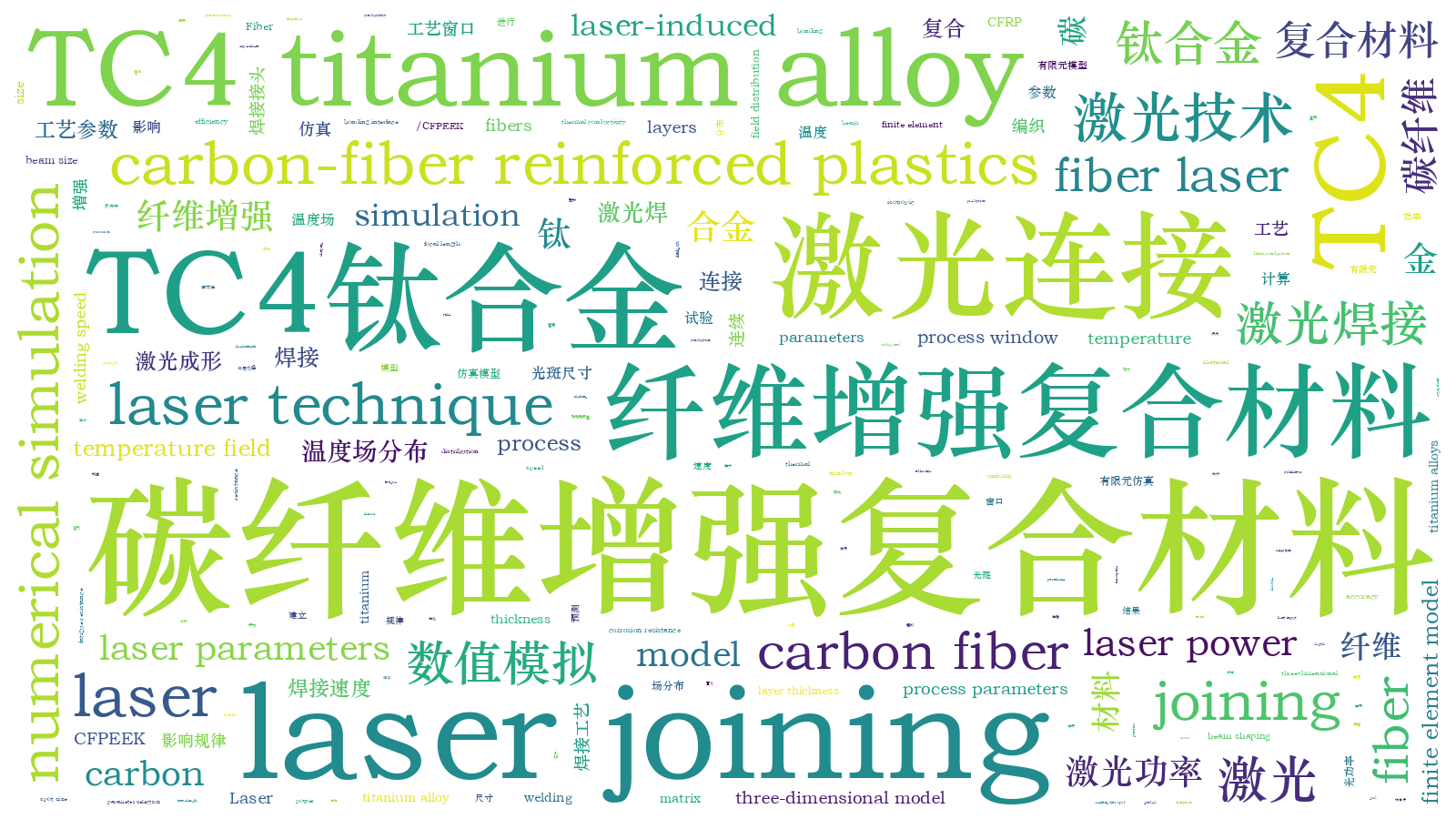碳纤维增强复合材料与钛合金激光连接仿真  下载: 603次封面文章
下载: 603次封面文章
Carbon fiber reinforced plastics (CFRP) and titanium alloys are used in modern equipment owing to their high specific strength, corrosion resistance, and fatigue resistance. Heterogeneous joints consisting of CFRP and metals are widely used in the aerospace industry. Laser joining of CFRP and metals has recently attracted significant interest owing to its high joining efficiency and superior joining quality compared to mechanical joining, adhesive bonding, ultrasonic welding, etc. Because the process is both time-consuming and labor-intensive, the accurate prediction of appropriate process parameters is highly desired. In this study, a realistic three-dimensional finite element model is developed for the numerical simulation of the temperature field during the laser joining of carbon-fiber reinforced polyetheretherketone matrix composites (CFPEEK) with a poly ether ether ketone (PEEK) resin matrix and TC4 titanium alloy, and the laser joining process is investigated.
A fiber laser with a laser wavelength of 1070 nm and collimator focal length of 200 mm is used in the laser joining experiment (Fig. 1). A rectangular spot is obtained by beam shaping using an integrating mirror, with a focal length of 200 mm and a spot size of 0.6 mm×5.8 mm. The laser power is 3500 W, and the welding speed ranges from 5 mm/s to 40 mm/s. The dimensions of the TC4 titanium alloy and CFPEEK are 60 mm×30 mm×2 mm and 60 mm×25 mm×2 mm, respectively. The CFPPEK is composed of a PEEK matrix and carbon fibers. The carbon fiber layers are alternately layered with PEEK layers and have a 0°/90° cross-weave (Fig. 2). The PEEK layer is 0.1 mm thick on average, and the carbon fiber layer is 0.2 mm thick on average.
A three-dimensional model of laser joining of TC4/CFPEEK is established based on the fact that laser-induced heat input is transferred to the bonding interface via heat conduction and actual experimental conditions. The grid size is graded to improve the simulation accuracy while maintaining computational efficiency (Fig. 3). Importantly, in the CFPEEK module, the PEEK layer thickness (0.1 mm) is uniform for an isotropic homogeneous material, and the fiber layer thickness is uniform (0.2 mm) for an orthotropic material with a large difference in the thermophysical characteristics between the radial and axial directions. The thermal and physical parameters of the TC4 and CFPEEK used in the simulation are listed in Table 1. It is worth noting that the thermal conductivity of TC4 is relatively low, and it is therefore difficult to obtain the maximum melting depth in both TC4 and CFPEEK simultaneously (Fig. 4); thus, the experimental and simulation results of TC4 and CFPEEK are compared separately. The results reveal that the temperature field distribution obtained by the numerical simulation agrees well with the experimental results (Figs. 5-7). Our developed model is then used to estimate the temperature field distribution as a function of laser power (Figs. 8-10), welding speed (Figs. 11-14), and beam size (Figs. 15 and 16). Finally, a simulation-predicting laser joining process window is provided to guide the parameter selection for laser joining of TC4 and CFPEEK (Fig. 17).
Considering the carbon fiber and resin distributions in CFPEEK, a more realistic finite element model for the laser joining of CFPEEK and TC4 is developed. In this model, CFPEEK is composed of carbon fiber layers and resin layers that vary in thickness. The resin layer is isotropic, whereas the carbon fiber layer is orthogonal. This model is used to investigate the effects of laser parameters on the temperature field of the joint. The accuracy of the model is confirmed by the experimental results, and the process window for laser-joining CFPEEK and TC4 is predicted.
景若木, 徐洁洁, 肖荣诗, 黄婷. 碳纤维增强复合材料与钛合金激光连接仿真[J]. 中国激光, 2023, 50(8): 0802101. Ruomu Jing, Jiejie Xu, Rongshi Xiao, Ting Huang. Simulation Study of Laser Joining for Carbon Fiber Reinforced Plastics and Titanium Alloys[J]. Chinese Journal of Lasers, 2023, 50(8): 0802101.







